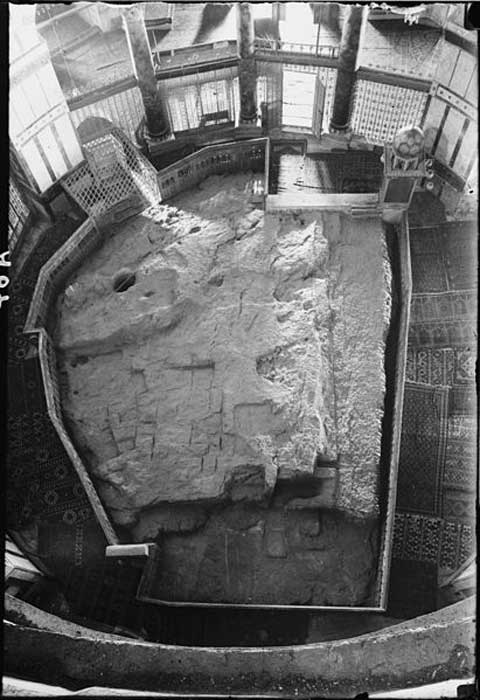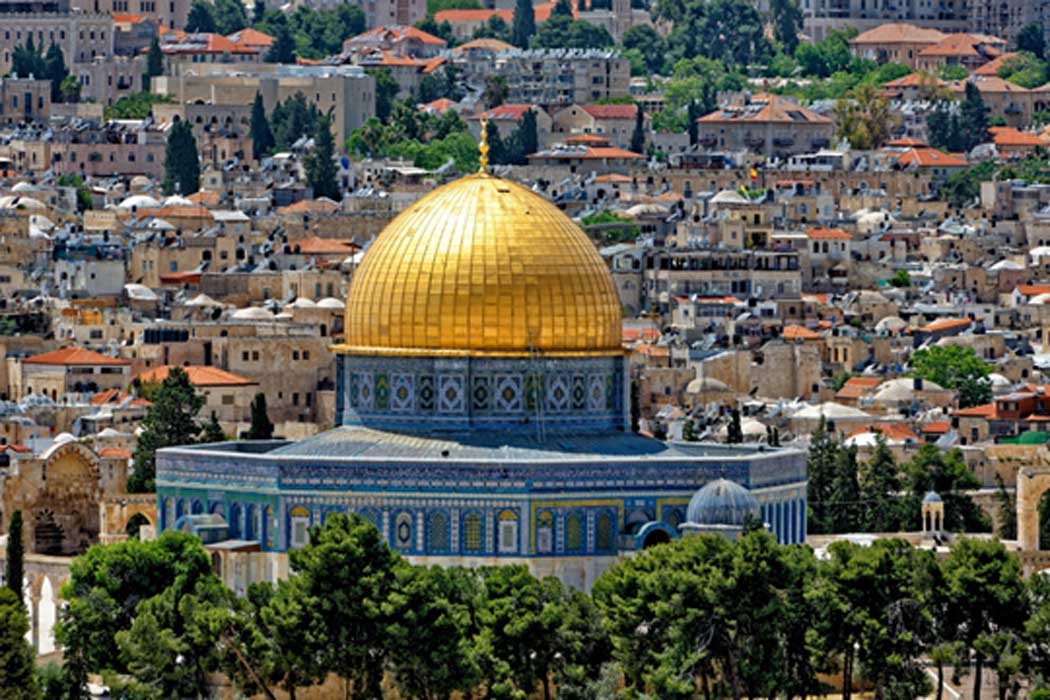The Dome of the Rock: A Magnet Attracting Multiple Religions to a Single Sacred Spot
The Dome of the Rock (known also as Qubbat al-Sakhrah in Arabic) is an Islamic shrine located on the Temple Mount in Jerusalem. This shrine dates to the 7th century, and is the oldest extant Islamic building in the world. The Dome of the Rock is sacred not only to Muslims, but also to Jews and Christians.
Early Use of the Dome of the Rock
The Dome of the Rock was commissioned by the Umayyad caliph, Abd al-Malik, and was completed in 691 AD. Although it is not entirely certain as to the original function of the Dome of the Rock, it is certain that it was not built as a mosque for public worship. During the Abbasid period (which succeeded the Umayyad Caliphate in the 8 th century AD), some Muslim historians wrote that the shrine was built as a substitute for the Ka’bah in Mecca, in an attempt to relocate the site of the hajj pilgrimage from Mecca to Jerusalem, as the former was under the control of rebels led by Ibn al-Zubayr.

Inside the Dome of the Rock, a 2015 view. (CC-BY-SA-3.0)
It seems that these claims are unlikely to be true, as Mecca remained the site of the hajj pilgrimage during the rebellion, and Abbasid historiography is generally biased against the Umayyads. Nevertheless, the Dome of the Rock is considered to be a sacred site amongst Muslims, due to the sacred rock under its dome. A portion of this rock is exposed, and is protected by railings. A natural cave is located beneath the rock, which may be accessed via a stairway.
- The Axis Mundi: Sacred Sites Where Heaven Meets Earth
- The First Temple: Crowning Achievement of King Solomon and Home of the Legendary Ark of the Covenant
- The Kaaba Black Stone: A Holy Stone from Outer Space?
Why is the Stone Sacred?
According to Islamic tradition, the sacred rock marks the spot where the Prophet Muhammad ascended to Heaven during the Isra and Mi’raj (known also as the Night Journey). This was a journey taken by the Prophet, who was accompanied by the angel Gabriel, on a creature known as al-Buraq, from Mecca to the ‘farthest mosque’, and then sped through the seven levels of Heaven. It is held that the entire episode occurred within a night.

The Sacred Rock beneath The Dome of the Rock. (Public Domain)
Why is it Sacred to Christians and Jews?
The sacred rock holds religious significance not only for Muslims, but for other religions as well. For instance, Christians and Jews during the Middle Ages believed that this was the site of the Temple of Solomon. Thus, during the Crusades, the Knights Templars had their headquarters at the Dome of the Rock, and their churches in Europe imitated its design. As for the Jews, this was believed to be the first part of the earth to come into existence, and it was from this sacred rock that the world was created. As this was regarded to be the center of the world, it became the spot where the Holy of Holies stood.
In 70 AD, Jerusalem was conquered by the Romans, and the Second Temple was destroyed. The Romans then turned the platform of the temple into a dung heap. When the holy city was conquered by the Rashidun Caliphate in 637 AD, the area was cleaned up, and the caliph, Umar ibn al-Khattab, built a wooden mosque on the spot where the al-Aqsa Mosque stands today. It was only several decades later, between AD 685 and 691 that the Dome of the Rock was constructed.
The Umayyad caliph, Abd al-Malik, is reported to have intended the structure to serve as a shrine for pilgrims. The task of building the monument was given to two engineers, Yazid ibn Salam and Raja' ibn Hayweh. The engineers relied on the architectural tradition of the Byzantine Empire for inspiration. The overall form of the Dome of the Rock, for instance, is based on the Byzantine martyriums, which are structures built to house and venerate the relics of saints.

The ambitious Muslim builders of The Dome of the Rock replaced an earlier wooden structure. (CC BY-SA 4.0)
Statement of Islamic Triumph
In spite of its reliance on Byzantine Christian architecture, the Dome of the Rock may have been constructed as a statement of the triumph of Islam. Some have proposed that the grandeur of the Dome was meant to rival the Christian buildings in Jerusalem, most notably the Church of the Holy Sepulchre. This is further supported by the Dome’s Arabic inscriptions, which feature a selection of passages from the Quran representing the Islamic view of Jesus as a prophet, rather than the Son of God.
Top image: The Dome of the Rock glistens in Jerusalem’s cityscape. Source: (Bernhard / Fotolia)
By Wu Mingren
References
Botchkareva, A., 2012. The Dome of the Rock. [Online]
Available at: https://www.metmuseum.org/exhibitions/listings/2012/byzantium-and-islam/blog/where-in-the-world/posts/dome-of-the-rock
Lonely Planet, 2018. Dome of the Rock. [Online]
Available at: https://www.lonelyplanet.com/jerusalem/attractions/dome-of-the-rock/a/poi-sig/451453/361047
New World Encyclopedia, 2017. Dome of the Rock. [Online]
Available at: http://www.newworldencyclopedia.org/entry/Dome_of_the_Rock
Sacred Destinations, 2018. Dome of the Rock, Jerusalem. [Online]
Available at: http://www.sacred-destinations.com/israel/jerusalem-dome-of-the-rock
The Editors of Encyclopaedia Britannica, 2018. Dome of the Rock. [Online]
Available at: https://www.britannica.com/topic/Dome-of-the-Rock



















